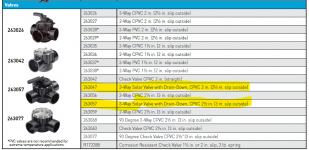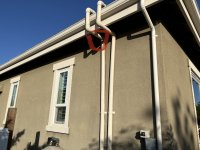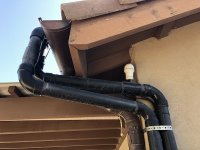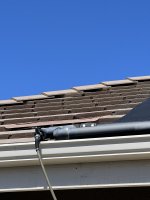- Nov 12, 2017
- 12,647
- Pool Size
- 12300
- Surface
- Plaster
- Chlorine
- Salt Water Generator
- SWG Type
- Pentair Intellichlor IC-40
Forgot to mention:
1. You've wondered about various work-arounds, like moving the valve after the pump goes off, or drilling a hole, or adding isolation valves, etc. I can't speak to any of those, for the most part, because I only have experience with my system, which doesn't utilize any of those things. That's not to say some of the alternate options couldn't be worked out, I just don't know how to help with that. If it turns out you only need to swap your solar valve, that's easy and cheap(ish) and that would solve the issue without work-arounds, leaving you with a properly plumbed system. So that's my recommendation.
2. If it turns out you have trouble with the VRV, you could use this idea. I didn't install mine on the roof. They don't need to be up there. Mine is tucked under my eve, hidden from the sun. I figured it was PVC and going to be subjected to too much UV up there, so mine's in the shade 24/7. Plus it's much easier to service should I ever need to, I can get at it with a small ladder. So if a new VRV is in your future, you could consider moving it...
1. You've wondered about various work-arounds, like moving the valve after the pump goes off, or drilling a hole, or adding isolation valves, etc. I can't speak to any of those, for the most part, because I only have experience with my system, which doesn't utilize any of those things. That's not to say some of the alternate options couldn't be worked out, I just don't know how to help with that. If it turns out you only need to swap your solar valve, that's easy and cheap(ish) and that would solve the issue without work-arounds, leaving you with a properly plumbed system. So that's my recommendation.
2. If it turns out you have trouble with the VRV, you could use this idea. I didn't install mine on the roof. They don't need to be up there. Mine is tucked under my eve, hidden from the sun. I figured it was PVC and going to be subjected to too much UV up there, so mine's in the shade 24/7. Plus it's much easier to service should I ever need to, I can get at it with a small ladder. So if a new VRV is in your future, you could consider moving it...






